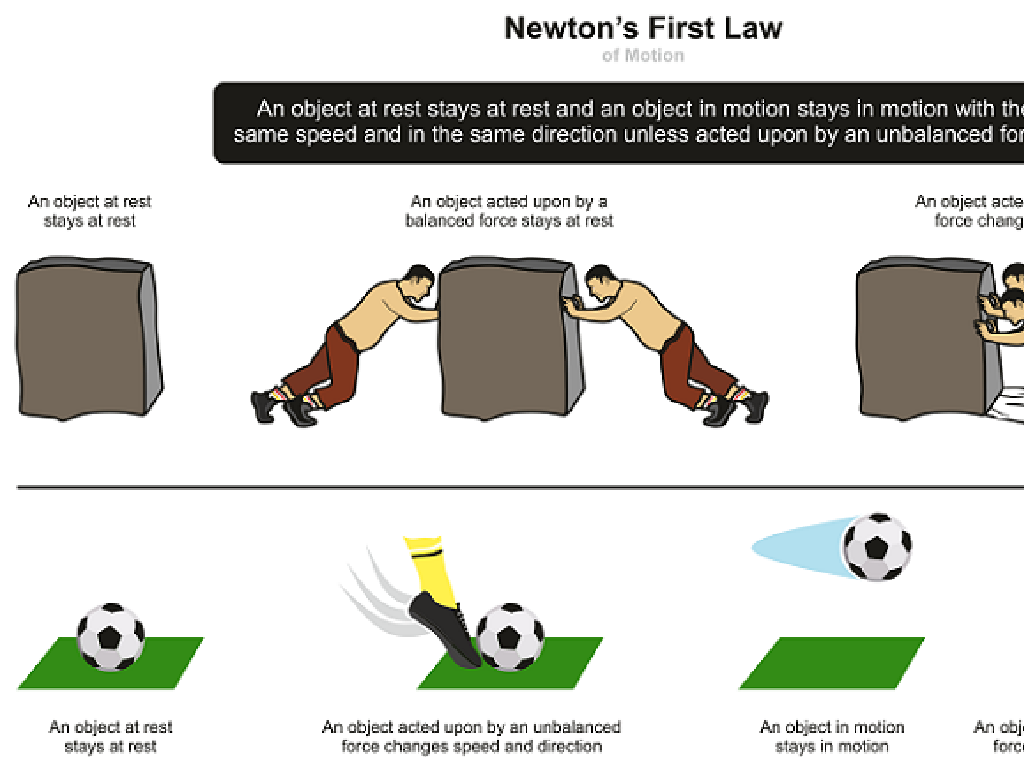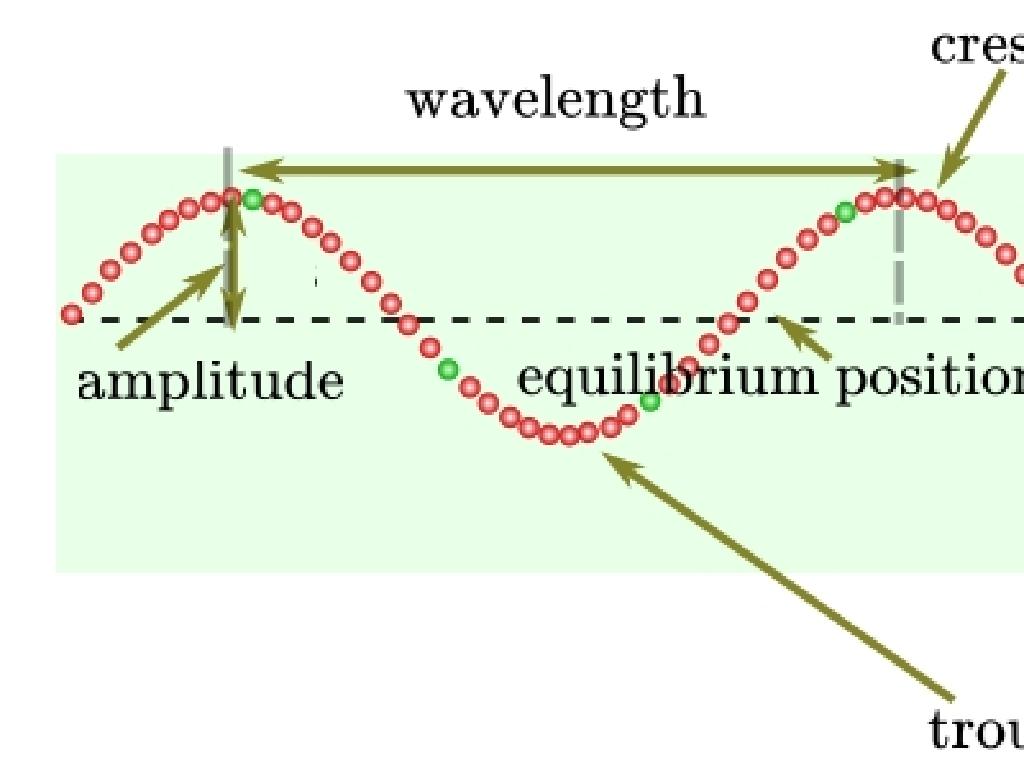Antebellum Reform Movements
Subject: Social studies
Grade: Seventh grade
Topic: The Antebellum Period
Please LOG IN to download the presentation. Access is available to registered users only.
View More Content
Welcome to Antebellum Reform Movements
– Exploring the Antebellum Period
– A time before the Civil War, marked by change
– Defining ‘Reform Movements’
– Organized efforts to improve society
– The need for reform in Antebellum America
– Address issues like slavery, women’s rights, education
– Key areas of reform
– Focus on temperance, abolition, and suffrage movements
|
The Antebellum period was a time of significant change in America, leading up to the Civil War. This slide introduces students to the concept of reform movements, which were organized efforts to remedy societal problems and injustices of the time. It’s crucial to discuss why these reforms were necessary, highlighting issues such as slavery, the lack of women’s rights, and the need for better education. Emphasize the impact of key reform movements, including the temperance movement against alcohol abuse, the abolition movement to end slavery, and the suffrage movement for women’s right to vote. Encourage students to think about how these reforms have shaped the society we live in today.
Context of the Antebellum Period
– Timeframe: Antebellum significance
– Antebellum period refers to the time before the Civil War, from 1812 to 1861.
– Social and economic overview
– The era saw both social stratification and the rise of a market economy.
– Cotton gin’s impact
– Eli Whitney’s cotton gin increased cotton production, boosting the economy.
– Expansion of slavery
– The demand for cotton led to a growth in slavery in the Southern states.
|
The Antebellum period is a critical era in American history, spanning the years before the Civil War. It’s marked by significant cultural, social, and economic changes. The invention of the cotton gin by Eli Whitney revolutionized the cotton industry, making the production process more efficient and profitable. This economic boom, however, had a dark side, as it led to an increase in the demand for slave labor in the South to support the expanding cotton plantations. Understanding this context is essential for students to grasp the complexities of the period and the subsequent reform movements that sought to address the era’s social and economic inequalities.
Key Antebellum Reform Movements
– Abolitionist Movement impact
– Aimed to abolish slavery across the US
– Women’s Rights Movement goals
– Fought for equal rights for women, including voting
– Education Reform significance
– Advocated for free, public education for all children
– Influence on modern society
|
This slide highlights the major social reform movements during the Antebellum period. The Abolitionist Movement was a moral crusade to end the practice of slavery, with leaders like Frederick Douglass and Harriet Tubman at the forefront. The Women’s Rights Movement, spearheaded by figures such as Susan B. Anthony and Elizabeth Cady Stanton, sought to secure equal rights for women, particularly the right to vote. Education Reform was championed by Horace Mann, who argued for free public education to be available to all children, regardless of social class, as a means to promote democracy and civic responsibility. These movements laid the groundwork for future social changes and have had a lasting impact on American society. Encourage students to draw parallels between these historical movements and current social issues.
The Abolitionist Movement
– Define the Abolitionist Movement
– Aimed to end slavery and promote freedom
– Key figures: Douglass & Tubman
– Frederick Douglass, an escaped slave and Harriet Tubman, leader of the Underground Railroad
– Movement’s societal impact
– It spurred civil rights progress and altered public opinion
– Legacy of abolitionism
|
The Abolitionist Movement was a pivotal reform effort during the Antebellum period with the goal of ending slavery in the United States. Key figures like Frederick Douglass, a former slave who became a leading voice for abolition, and Harriet Tubman, who risked her life to lead slaves to freedom via the Underground Railroad, played significant roles. The movement’s impact on society was profound, laying the groundwork for the Civil War and subsequent civil rights advancements. It’s important to discuss the lasting legacy of the movement and how it set the stage for future social justice efforts. Encourage students to reflect on the courage and determination of these figures and the movement’s relevance today.
Women’s Rights Movement: A Fight for Equality
– Seneca Falls Convention
– First women’s rights convention in 1848, marked the start of the organized fight for women’s equality in America.
– Declaration of Sentiments
– A document signed at the Seneca Falls Convention outlining the rights that American women should be entitled to as citizens.
– Key figures in the movement
– Elizabeth Cady Stanton and Susan B. Anthony were pivotal in advocating for women’s rights and suffrage.
– Impact on women’s suffrage
– The movement laid the groundwork for the 19th Amendment, granting women the right to vote in 1920.
|
This slide introduces students to the Women’s Rights Movement during the Antebellum period, focusing on the Seneca Falls Convention, which was a seminal event in the fight for women’s equality. The Declaration of Sentiments, modeled after the Declaration of Independence, outlined the injustices faced by women and became a guiding document for the movement. Highlight the contributions of Elizabeth Cady Stanton and Susan B. Anthony, who were instrumental in the struggle for women’s suffrage. Discuss the long-term effects of the movement, particularly how it set the stage for the eventual passage of the 19th Amendment. Encourage students to reflect on the importance of these historical events and figures in shaping modern society.
Education Reform in the Antebellum Period
– Horace Mann’s leadership
– Mann advocated for public education for all children
– Rise of compulsory education
– Laws requiring kids to attend school
– Impact on American society
– Education became a catalyst for social change
– Common School Movement
– Movement aimed at providing universal, non-sectarian education
|
This slide delves into the significant education reforms during the Antebellum period, highlighting Horace Mann’s role in advocating for public education accessible to all children, which laid the groundwork for the Common School Movement. The push for compulsory education led to laws that required children to attend school, a major shift in societal norms. These reforms had a profound impact on American society, democratizing education and acting as a catalyst for social change. The Common School Movement was pivotal in establishing a foundation for the public school system, emphasizing the importance of non-sectarian and universal education. Discuss with students how these changes might have affected children like them during that era and the long-term effects on the nation’s growth.
Other Notable Antebellum Reforms
– Temperance Movement impact
– Aimed to reduce alcohol consumption in society
– Mental Health Reform
– Advocated for better conditions for the mentally ill
– Prison Reform efforts
– Pushed for a more humane penal system
– Significance of these reforms
|
This slide highlights the various social reform movements during the Antebellum period beyond the well-known abolition and women’s rights movements. The Temperance Movement sought to curb alcohol abuse, which was seen as a cause of social ills. Mental Health Reform was spearheaded by individuals like Dorothea Dix, who fought for the dignified treatment of the mentally ill. Prison Reform aimed to transform prisons into places of rehabilitation rather than just punishment. These movements were significant as they reflected a growing concern for social welfare and the rights of the disadvantaged in Antebellum society. Encourage students to think about the long-term effects of these reforms and how they shaped modern American society.
Resistance and Challenges in Antebellum Reform Movements
– Reformers faced opposition
– Resistance from traditionalists and those benefiting from the status quo
– Economic & political hurdles
– Economic interests vs. moral arguments, political pushback from powerful groups
– Reform movements’ role pre-Civil War
– Movements like abolitionism created tensions that foreshadowed the Civil War
– Overcoming challenges
|
This slide aims to highlight the difficulties faced by antebellum reformers, including opposition from individuals and groups who were invested in maintaining the existing social and economic order. Economic and political challenges often stemmed from the conflict between entrenched economic interests and the moral arguments posed by reformers. The role of reform movements, particularly abolitionism, in exacerbating sectional tensions is crucial to understanding the lead-up to the Civil War. Discuss how reformers persevered despite these challenges, and encourage students to consider the complexities of advocating for change in a resistant society.
Class Activity: Reform Movement Role-Play
– Divide into groups for role-play
– Each group represents a reform movement
– Prepare and present your arguments
– Think like reformers: What changes are you advocating for?
– Discuss personal contributions to the movement
– Imagine living in the Antebellum period: How would you support your movement?
|
This activity is designed to engage students with the Antebellum reform movements by having them actively participate in a role-play exercise. Each group will research and embody a different reform movement, such as abolition, women’s rights, or education reform. They will prepare arguments as if they are part of that movement and present their case to the class. After presentations, lead a discussion where students reflect on how they might have contributed to their chosen movement if they lived during that time. This will help them connect personally with the historical content and understand the impact of individual actions in societal change. Possible activities include writing persuasive speeches, creating protest signs, or drafting letters to political leaders of the time.






